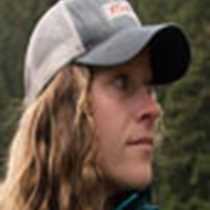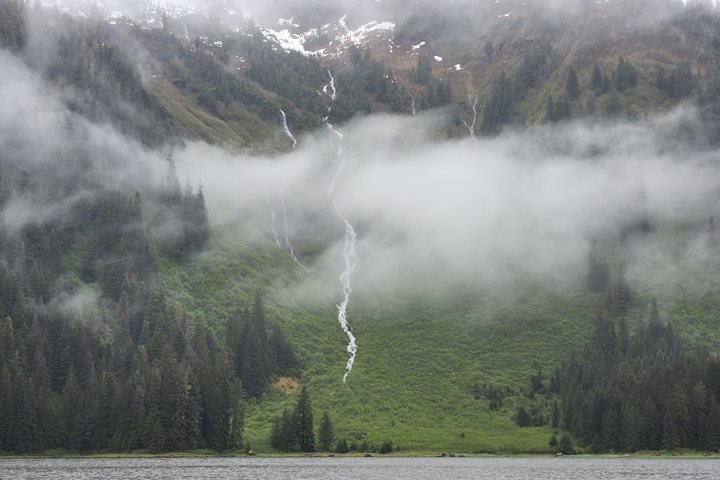The Inian Islands toe the line between the wild Pacific Ocean and the calm Inside Passage. They are composed of many outcroppings of land, mere rocky spits, buffering the mass power of the stormy Pacific. Depth and contour of the Pacific means productive seawater bottlenecks here, rushing in and out of these channels four times daily with the tide. The plankton-rich ocean brings with it life for small and large critters alike.
Sea lions wait on a rocky haul-out for the flood tide. Stellar sea lions are massive pinnipeds, the males reaching a maximum weight of 2400 lbs. The females, though much smaller, share the confidence and bold nature of the males. Eating prey from salmon to halibut, these marine mammals spend their time in the water as fierce hunters and their time on land very close to each other, appearing much more docile. Sea otters, a keystone species in the kelp forest ecosystem, have made a phenomenal comeback in this region. Their remarkable pelt was their crux, highly valuable commercially in not only America and Russia, but also other global markets. Having been heavily hunted in centuries past, once humans reduced their impact this animal recolonized the area. Sea otters are carnivores who focus on the marine invertebrate community. From basket stars to sea urchins, otters are merciless killers. Urchins are an incredibly important prey item for these wily mustelids—if the urchin population increases to an unsustainable degree they will demolish the kelp forests, as they are robust herbivores. On a Zodiac cruise around this area the guests onboard National Geographic Quest saw these critters and many more.
The afternoon took the ship to Fox Creek, a nearby beach with beautiful trails through the temperate rainforest of the Tongass National Forest. Fox Creek is home to a salmon stream that runs with pink salmon in early August, thick with fish providing essential protein to the entire ecosystem. The wide stretch of this contribution extends to even the trees which line the creekside. These arborous behemoths grow with the aid of marine isotopes, found only in the ocean-going fish. When brown bears drag these fish onshore and leave their carcasses to disintegrate the terrestrial flora devours them. The aliveness of the Alaskan rainforest is matched only by the vibrance of its temperate undersea world, and today this magical stretch where land meets sea showed off it’s true potential.







